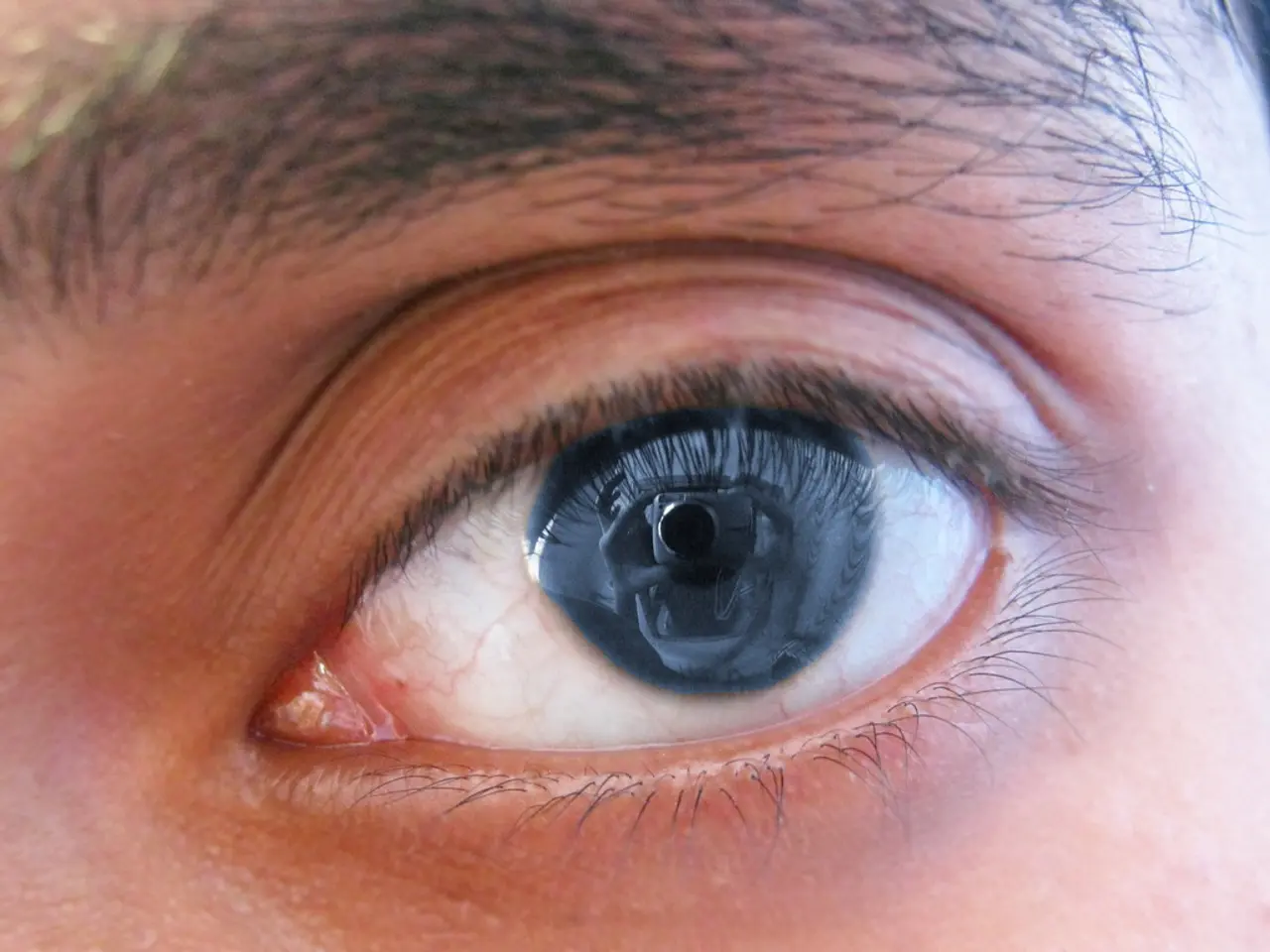Antibiotics for Bacterial Pink Eye: A Guide
Is the use of antibiotics for bacterial pink eye a required treatment?
Bacterial pink eye, also known as conjunctivitis, can be treated with antibiotics when symptoms suggest a bacterial infection and self-care measures are not effective. Antibiotics can help reduce the duration of the infection, alleviate symptoms, and prevent the spread of the infection to others.
Symptoms of Bacterial Conjunctivitis
Symptoms that may indicate a bacterial infection in pink eye include a thick, yellow or green discharge, redness and swelling, crusts on the eyelids in the morning, increased tearing, a gritty sensation, and severe symptoms such as eye pain, vision changes, or sensitivity to light.
Common Antibiotics for Bacterial Conjunctivitis
Common antibiotics used for bacterial conjunctivitis include Polymyxin B/Trimethoprim (Polytrim), Erythromycin, and various types of fluoroquinolones such as Levofloxacin, Ciprofloxacin, Ofloxacin, and others. The specific antibiotic and dosage will depend on the patient's condition and the advice of a healthcare provider.
Proper Use of Antibiotics
It is crucial to use antibiotics for pink eye as directed by a healthcare provider. Completing the entire treatment course is important, even if symptoms resolve, to ensure the infection is fully treated and to prevent antibiotic resistance. People should avoid sharing antibiotics with others, using the same cloth to clean both eyes, and wearing contact lenses during recovery.
Preventing Pink Eye
Preventive measures include washing hands frequently, refraining from rubbing or touching the eyes, and avoiding eye makeup during an active infection. These practices can help reduce the risk of getting pink eye or re-infecting oneself.
Important Considerations
Antibiotics have no efficacy in treating allergic or viral conjunctivitis. The symptoms of these types of pink eye may be similar, but bacterial infection can cause additional symptoms such as mucopurulent discharge, the presence of small bumps, and morning matting of the eyelids.
Antibiotics for pink eye may cause side effects such as eye discomfort, burning sensation, stinging or redness, sensitivity to light, blurred vision, tearing eyes, and eye dryness. If a person thinks they may have an eye infection, especially if they have a weakened immune system, or if the eye infection does not improve about 3 days after starting treatment, they should consult a doctor.
Immediately contact a doctor if a person experiences symptoms such as difficulty breathing or swallowing, swelling of the throat, tongue, lips, eyes, limbs, or face, hives, itching, skin rash, or prolonged eye infection (about 3 days) after starting treatment.
In conclusion, antibiotics can be an effective treatment for bacterial pink eye when used correctly. Always consult a healthcare provider for proper diagnosis and treatment.
- Bacterial conjunctivitis, also known as pink eye, can be alleviated with antibiotics if symptoms point towards a bacterial infection and self-care doesn't suffice.
- A thick, yellow or green discharge, redness and swelling, crusts on the eyelids in the morning, increased tearing, a gritty sensation, eye pain, vision changes, and sensitivity to light are potential indicators of a bacterial infection in pink eye.
- Common antibiotics deployed for bacterial conjunctivitis include Polymyxin B/Trimethoprim (Polytrim), Erythromycin, and various fluoroquinolones like Levofloxacin, Ciprofloxacin, Ofloxacin, and others.
- The antibiotic selection and dosage will be determined by the patient's condition and the guidance of a healthcare provider.
- It is imperative to follow the antibiotics prescribed for pink eye as directed by a healthcare provider to maximize effectiveness and minimize resistance.
- Failing to complete the entire treatment course can result in the persistence or recurrence of the infection.
- Sharing antibiotics with others, using the same cloth to clean both eyes, and wearing contact lenses during recovery should be avoided when using antibiotics for pink eye.
- Washing hands frequently and refraining from rubbing or touching the eyes can help prevent pink eye or re-infection.
- Eye makeup usage during an active infection should be avoided to decrease the likelihood of pink eye occurrence.
- Antibiotics are ineffective against allergic or viral pink eye, which may exhibit similar symptoms but are caused by different factors.
- Side effects of antibiotics for pink eye can include eye discomfort, burning sensation, stinging, redness, sensitivity to light, blurred vision, tearing eyes, and eye dryness.
- Consult a doctor immediately if experiencing difficulty breathing or swallowing, swelling of the throat, tongue, lips, eyes, limbs, or face, hives, itching, skin rash, or prolonged eye infection (about 3 days) after starting treatment.
- Weakened immune systems may require special attention when dealing with pink eye infections.
- If pink eye symptoms persist for more than 3 days despite treatment, consultation with a healthcare provider is recommended.
- In some cases, bacterial pink eye can contribute to chronic diseases.
- Maintaining good skin care and addressing skin conditions can improve overall health and wellness, including eye health.
- Кrandom ailments such as respiratory conditions and digestive health issues have links to the environment and climate change, affecting manufacturing practices and workplace wellness.
- Fitness and exercise are essential components of health and wellness, posing benefits for conditions like cancer, cardiovascular health, and mental health.
- Good nutrition plays a vital role in addressing sexual health concerns as well as preventing autoimmune disorders.
- Sensible therapies and treatments, grounded in science, are key to managing neurological disorders and age-related mental health issues.
- Ongoing research in environmental science is necessary for understanding the impact of climate change on growing environmental health concerns, such as skin conditions.
- Space and astronomy, a significant domain of science, has also made substantial strides in medical conditions and health, opening opportunities in technological advancements like therapies and treatments for aerospace missions.
- Entrepreneurship and innovative technologies in retail, finance, and real estate are making an impact on the healthcare and wellness industry.
- The adoption of digital technologies like fintech and digitized medical records (including Medicare) has transformed the banking and insurance sectors, providing better access to healthcare for more people.
- Visionary leadership and diversity and inclusion initiatives are crucial in developing small businesses, ultimately contributing to venture capital investments and personal finance opportunities in various industries.
- Debt management and budgeting practices are essential for individuals aiming to save for future expenses, such as retirement, or to invest in business ventures and real estate.
- Sound energy policies are vital for improving energy efficiency in both residential and commercial settings, promoting a healthier planet and contributing to the economy through sustainable industries.
- The finance industry can play a significant role in investing in research and development for emerging trends, such as cannabidiol (CBD) and its potential benefits for various medical conditions.
- Effective leadership, coupled with the integration of new technologies, has the potential to revolutionize transportation and ensure the safety and health of commuters.
- By promoting strong leadership, diversity, and environmental sustainability, the private equity industry can operate within a progressive business landscape and scale public and private companies in the space and aerospace sector.








